I am sure you have either seen an overlanding rig by now, either in the wild or on some social media post. They have a rooftop tent and a ton of gear strapped to the outside of the vehicle. While they look cool, you must ask yourself what happens if an unseen force suddenly stops that vehicle and what happens to all that gear. I try to keep as much gear inside the vehicle as possible and keep things as hidden / stealthy as possible. Since my rig is also my daily driver, I do not want to give people a reason to explore the goodies inside. Tips on how to do that will come in a future post. We are talking about Roof Rails today and why you need to know what you have before strapping hundreds of pounds of gear to them and the related safety issues.
On my Jeep, I had an external exoskeleton that allowed me to attach gear and my rooftop tent to the vehicle. I also made sure to understand the max load-out weight limits of the vehicle as well. The Jeep was unique because I had a soft top on it at first and did not want to modify it in a way that would hinder my ability to use it. Many who own a Jeep with a hard top will permanently mount a roof rack to the hard top to allow for gear storage.
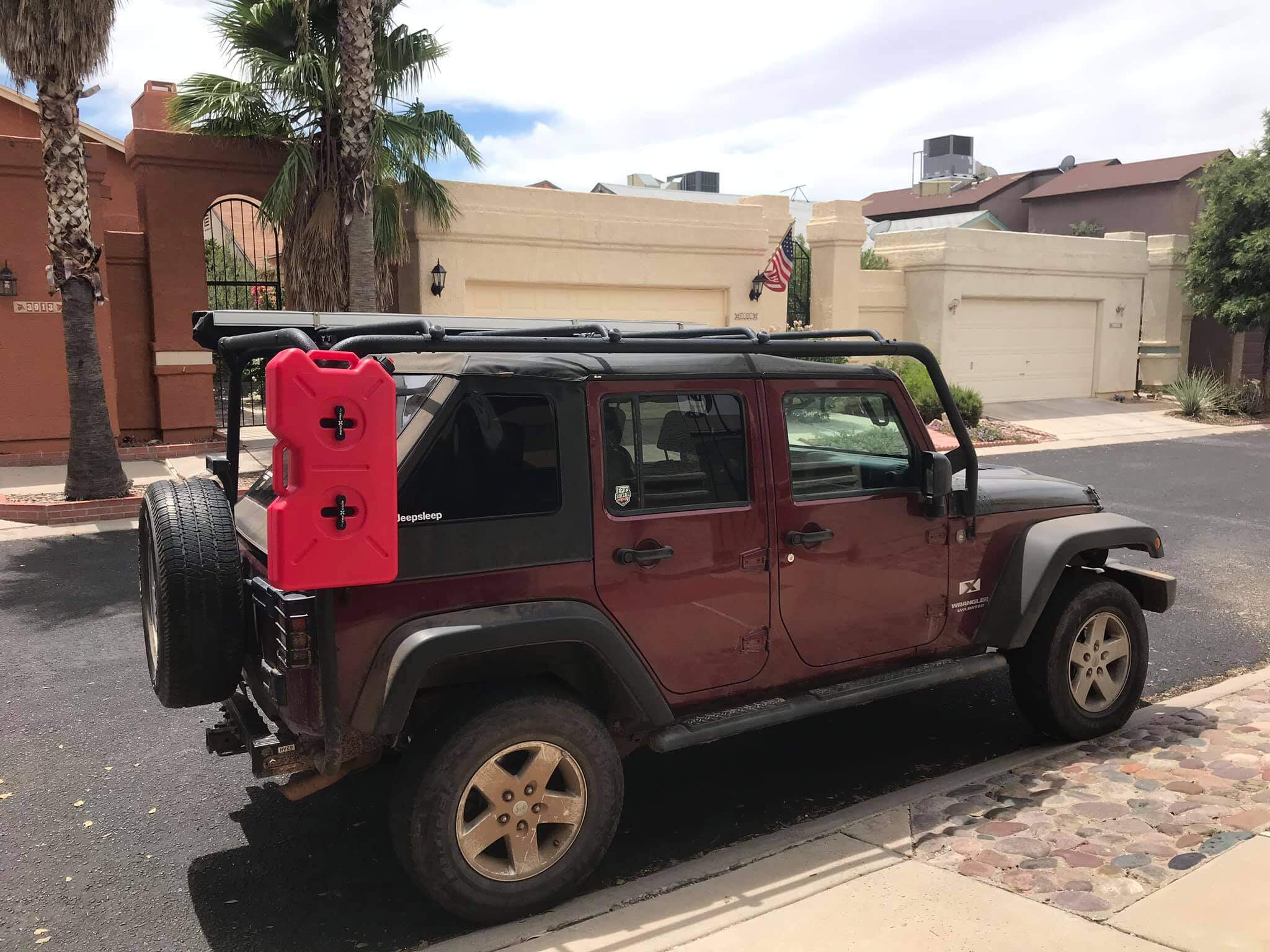
Moving over to the 4Runner, I researched if the factory roof rails would allow me to add the tent. What I found was quite interesting. I found that the manufacturers will provide suggested weight limits but would not give exacts. I also learned there are two types of weight limits static and dynamic.
Static Weight Limit
The static weight limit is the maximum weight the roof rails or rack can hold while a vehicle stands still.
Dynamic Weight Limit
Dynamic weight limit is the maximum weight the roof rails or rack can hold while the vehicle is in motion. This limit is much lower than the static weight limit due to the increased forces acting on the vehicle when in motion.
NOTE: Each vehicle is different, and every product from the manufacturer or aftermarket has different limits. Review the owner’s manuals and documentation for those limits before loading up your vehicle or making purchases based on your needs.
What I found for my 4runner was that the tent I had on my Jeep was slightly over the limit of the rails, and there are cross bars that you can purchase that are heavier than the factory ones. These cross bars would have been a perfect solution if I was going to add a roof basket and store cargo up there when traveling. However, with my intentions of putting a rooftop tent up there, I wanted a little extra security and peace of mind by having my options over-engineered vs. “it could work.” During that same time, a news article was spreading around the internet that an improperly strapped-down kayak had flown off a vehicle on the highway and struck a motorcyclist. A tragic accident could have been avoided, and considerable conversations continue about what is safe and why you need all that gear strapped to your vehicle.
With that in mind, I set out to see my options. Early in the research, it became clear that I would have to replace my roof rails with a rack. Thankfully there is a plethora of options for after-market racks for the 4runner. Based on my needs, budget, overall reviews, etc, I picked a Prisu rack. More specifically, I chose the no-drill rack option as I did not want to drill into the truck body.
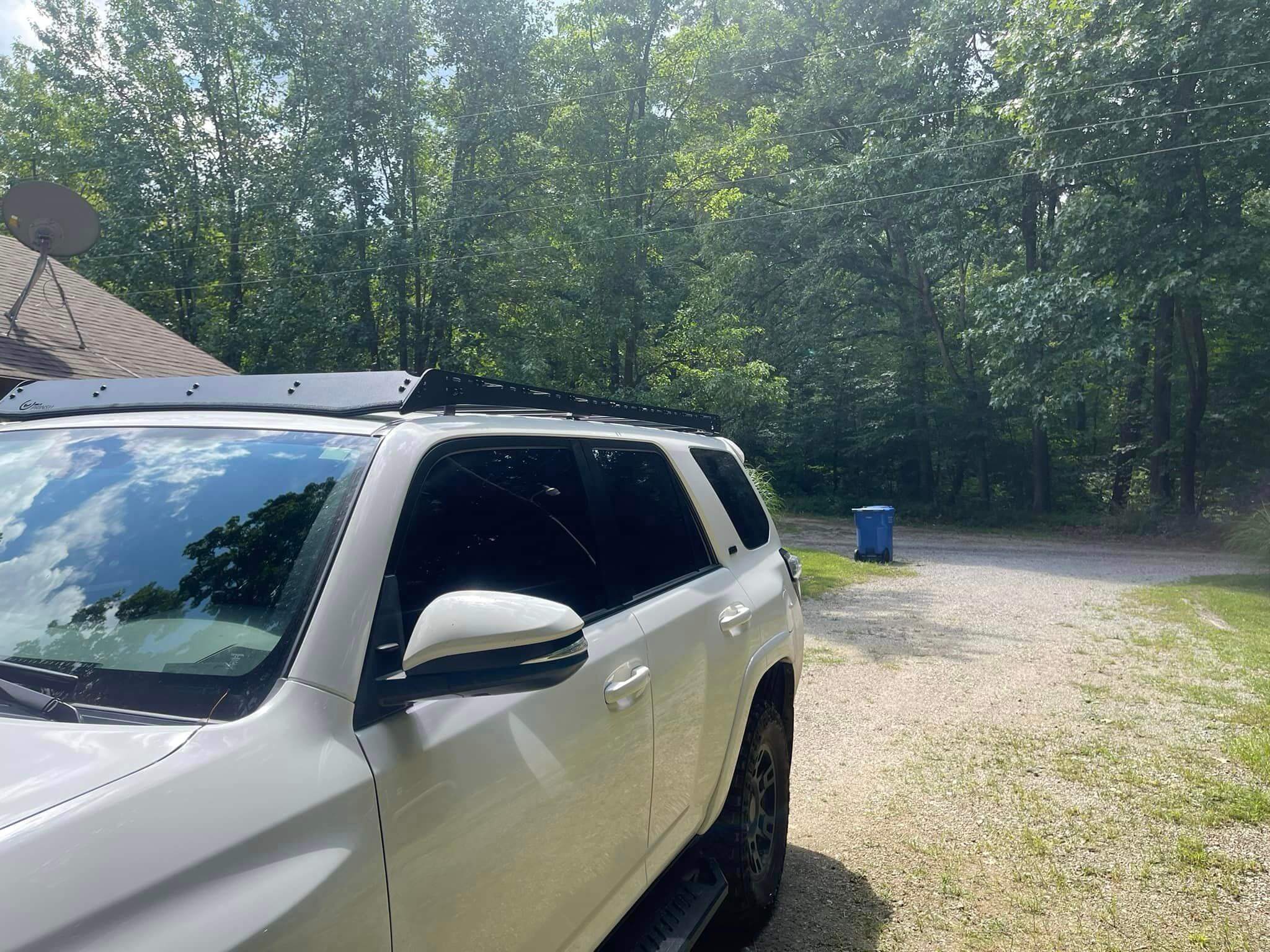
For anyone looking to upgrade your rails with a roof rack, I would suggest figuring out what you would be using it for if you do not plan on hauling lots of weight, then maybe add a more robust cross-bar system to haul your kayaks back and forth to your favorite spots. The flip side is if you plan on putting something much heavier on your vehicle, then do the research, read reviews, and it does not hurt to go with a little extra, just in case.
Since installing the rack, I have added my tent, and sadly the tent covers the entire rack and did not allow for much room when installing it. It was a process, and I finally got it all bolted down. I learned quite a bit during the process. Even when installing simple things, make sure to have extra long wrenches to get into the spaces you can’t easily access. In a future post, we will look at different types of tents and what might make the most sense for you.
As always my friends happy trails and stay adventerious.
Get stories and posts before they are posted here on the site by signing up for the email newsletter. Follow me on Instagram and Facebook. You can also find fun stickers and more from the places we all love at my Etsy shop.

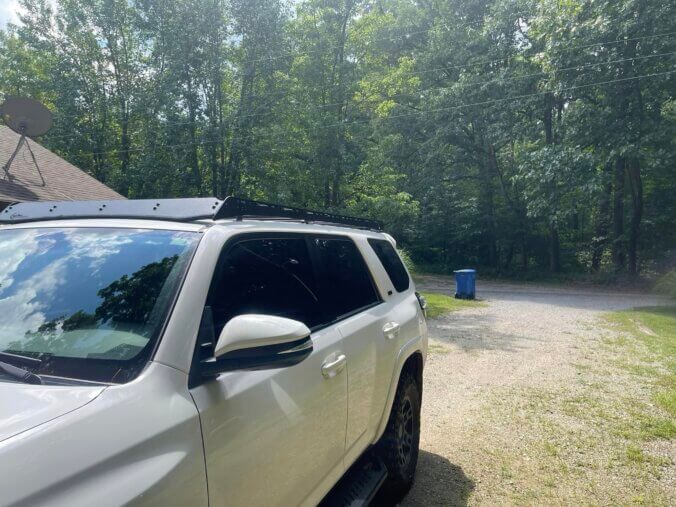

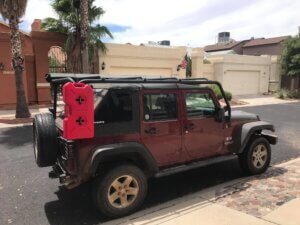
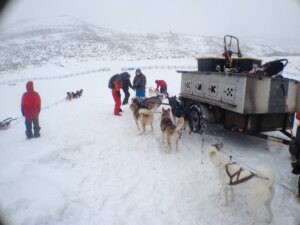

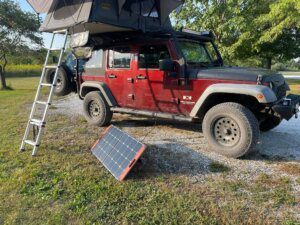





What was the most important factor or consideration that influenced your decision to replace the roof rails with a rack on your 4Runner for carrying gear and a rooftop tent, and how did you go about choosing the right rack for your needs?
The most important factor was the weight limits that the factory rails had. Due to the weight limits I needed to added the rack in order to install my rooftop tent. In terms of choosing the rack, I did quite a bit of research on forums, Facebook pages, social media etc for what others were suggesting and what would work for my budget.